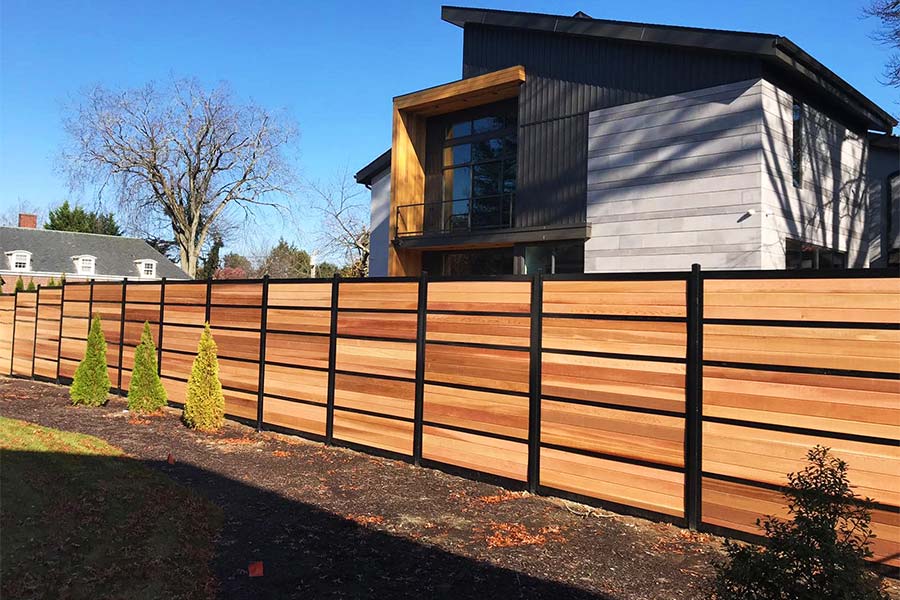All Categories
Featured

A fence works as even more than just a boundary; it gives personal privacy, protection, and enhances the aesthetic charm of your residential property. Like any outdoor structure, a fence will unavoidably deal with wear and tear from the aspects and age. While routine maintenance can extend the life of your fence, there comes a time when repair work no more are sufficient, and it's time to consider replacement. So, just how do you understand when your fence is beyond conserving? Right here are some essential signs that your fencing may require to be changed.
- Noticeable Damages or Put On. Wooden fences are particularly susceptible to splitting or splintering over time, while vinyl fences can create splits. If the damage is extensive or structural, fixing private sections may not be sufficient, and replacing the fence becomes needed.
- Rot and Degeneration. Wooden fencings are especially susceptible to rot, especially in areas with high moisture or frequent rains. It can lead to decay when dampness gets caught in the timber. If you discover that components of your fence feel soft to the touch or if you see mold and mildew or fungi growing, it suggests rot. Small rot can in some cases be repaired, considerable decay, specifically near the base of fencing blog posts, can jeopardize the stability of the entire fence. In such situations, replacement is typically the finest choice.
- Leaning or Tilting. A leaning fence is a clear indication that something is wrong with its structural support. If the fence proceeds to lean in spite of attempts at modification, it may be time to change the affected sections or the whole fencing.
- Rust or Deterioration (For Metal Fences) While small corrosion can usually be gotten rid of and treated, considerable rust that compromises the fencing's security is an indication that replacement is necessary. It's much better to change a greatly corroded metal fencing than to continue trying repair work.
- Insect Infestations. Wooden fences are a common target for bugs like termites, carpenter ants, and rats. These parasites can create considerable damage by tunneling right into the timber and deteriorating its structure. If you discover little openings, sawdust heaps, or actual bugs residing in your fence, it's crucial to deal with the infestation today. In cases where the damage is extreme, the damaged fencing blog posts or boards might require to be replaced to restore the fencing's security.
- Problem Maintaining the Fencing. If you locate yourself continuously making repair work to the same areas of your fence, it could be a sign that the fencing is past its prime. If you're spending more cash on covering up old sections than you would certainly on a complete replacement, it's time to think about changing the fence entirely.
- Age of the Fence. The age of your fence plays a significant duty in its total problem. While the life expectancy of a fencing can differ depending on the location, weather, and material conditions, the majority of fences last between 15 and two decades. If your fencing is approaching or exceeding its expected life-span and revealing indications of deterioration, it might be time to change it. Despite regular upkeep, an aging fencing will eventually require to be replaced to keep its functionality and look.
- Obsolete Appearance. Sometimes, a fence simply ends up being obsolete, no more matching the style or demands of your property. In time, your taste, the landscape, or the design of your home may change. , if your fence no much longer enhances your home or satisfies your requirements-- such as personal privacy, protection, or appearances-- it might be time to consider a substitute.. New fence products and layouts are readily available that offer improved sturdiness, aesthetic, and performance allure.
- Fencing No More Offers Its Function. Your needs for a fencing can advance over time. If your initial fence was made for decoration or to maintain pets contained, but now you require extra personal privacy or safety and security, a replacement could be required. A fence that no more serves its designated function is not just much less reliable however can additionally diminish the general value of your building. In such situations, replacing the fencing with one that meets your existing demands is the most effective choice.

Final thought. A fencing is a fundamental part of your home's outside, giving privacy, safety, and design. Nevertheless, like any type of framework, it will ultimately reveal signs of aging or damages. If you see any of the indications noted above-- visible damages, rot, leaning, pest infestations, or an out-of-date appearance-- it may be time to replace your fence. Replacing an old, damaged fence can boost the total value of your home, improve security, and give your yard a fresh look. By watching out for these indicators, you can make an educated choice regarding when it's time to purchase a new fencing.
Latest Posts
Explore Your LASIK Evaluation Near Me at the Eye Center South
Published May 10, 25
1 min read
Visit Strathmere’s Seaside Haven: Relax, Savor, and Stay at Deauville Inn
Published May 10, 25
2 min read
Need Low-Cost Oil Change Solutions in St. Louis? Car-X Ensures Peak Performance
Published May 09, 25
1 min read
More
Latest Posts
Explore Your LASIK Evaluation Near Me at the Eye Center South
Published May 10, 25
1 min read
Visit Strathmere’s Seaside Haven: Relax, Savor, and Stay at Deauville Inn
Published May 10, 25
2 min read
Need Low-Cost Oil Change Solutions in St. Louis? Car-X Ensures Peak Performance
Published May 09, 25
1 min read